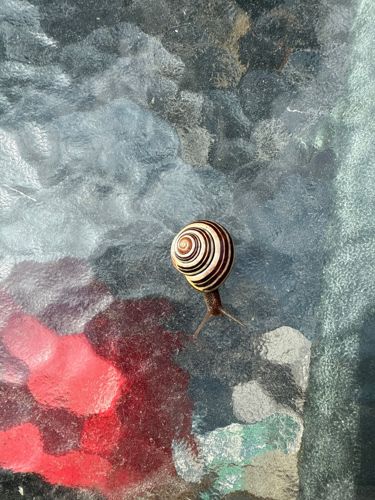Brown-lipped Snail
Scientific Name: Cepaea nemoralis
Order & Family: Stylommatophora (Order), Helicidae (Family)
Size: Shell diameter typically ranges from 18 to 25 mm (0.7 to 1 inch).

Natural Habitat
Gardens, woodlands, hedgerows, grasslands, and disturbed areas. It is particularly common in areas with vegetation and calcium-rich soil.
Diet & Feeding
Herbivorous, feeding primarily on a variety of plants, including decaying plant material, algae, fungi, and young plant shoots.
Behavior Patterns
Active mainly during damp conditions, such as after rain or at night, to avoid desiccation. They are hermaphroditic, meaning each individual has both male and female reproductive organs, and they lay clutches of eggs in the soil. They are known for their shell's polymorphic color patterns (yellow, pink, brown) and banding variations, which are thought to be adaptations for camouflage in different environments.
Risks & Benefits
Generally considered a garden pest as they can damage young plants and crops. However, they also contribute to decomposition by feeding on decaying plant matter. They can serve as a food source for various predators like birds, hedgehogs, and some insects. They are not harmful to humans.
Identified on: 9/20/2025